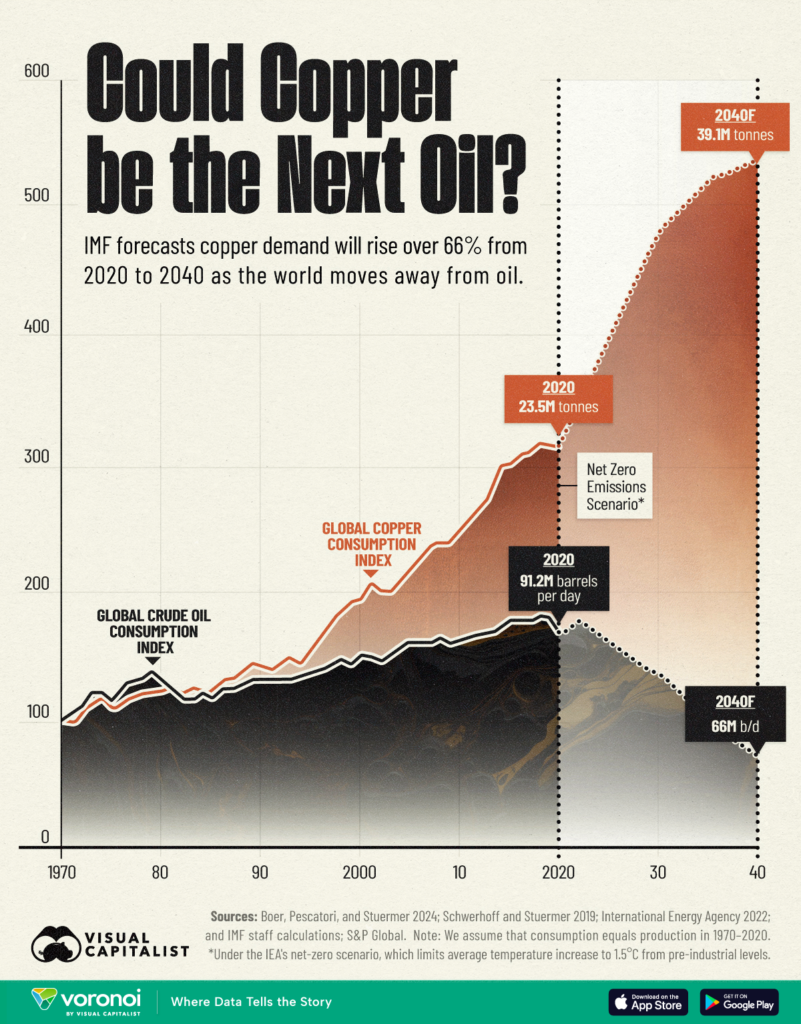
In 2021, Goldman Sachs declared copper “the new oil,” highlighting its essential role in clean energy technologies. Two years later, the IMF forecasted that copper demand will rise by over 66% from 2020 to 2040 as the world transitions away from oil.
In this graphic, Visual Capitalist illustrates how copper demand is projected to increase over the coming decades, while oil consumption is expected to decrease. The data was compiled by the International Monetary Fund as of October 2024.
Copper is critical for a wide range of applications, including the electrical grid, electric vehicles (EVs), and renewable energy technologies. Beyond clean energy, copper is also extensively used in industries such as construction, infrastructure, and defense due to its unique properties.
As a result, global copper demand is projected to grow from 25.9 million tonnes in 2023 to 39.1 million tonnes by 2040 under a net-zero emissions scenario that limits average temperature increases to 1.5°C above pre-industrial levels.
| Resource | 2023 Demand | 2040 Forecast |
|---|---|---|
| Copper | 25.9 million tonnes | 39.1 million tonnes |
| Oil | 101.9 million barrels per day | 66.0 million barrels per day |
Much of this growth is expected to come from the EV industry. Many components of battery electric vehicles rely on copper. On average, a standard EV contains 60-83 kg of copper, four times more than an internal combustion engine vehicle, which typically uses 15-20 kg of copper per car.
Meanwhile, oil consumption is projected to decrease, dropping from 101.9 million barrels per day in 2023 to 66 million barrels per day by 2040.
The decline in oil use is driven by global efforts to reduce carbon emissions and the growing adoption of renewable energy. Additionally, improvements in energy efficiency and policy regulations are further curbing oil demand.
Comments
Bytch pliz
Unrealistically low prognosis for oil consumption.